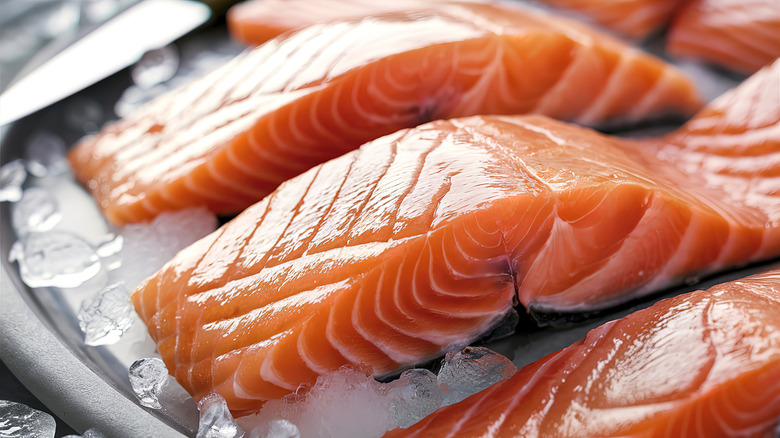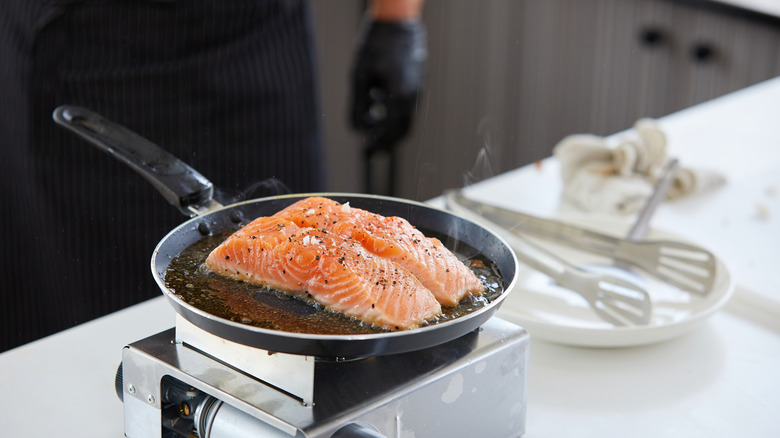How To Tell If Your Salmon Is Perfectly Cooked
Salmon is one of the most delicious fish in the sea, with flaky pink flesh that practically melts in your mouth when cooked properly. But therein lies the problem: It must be cooked properly, or it'll come out dry and chalky. While there are many mistakes people make when cooking salmon, overcooking filets is one of the worst, because it completely changes the taste and texture of what could be a luxurious meal. Fortunately, you don't have to be a pro to cook salmon perfectly; all you need to know are the right tricks.
To tell whether your salmon is done, use a fork (or your finger) to gently press down on the surface of the filet. If it starts to flake along its white stripes, it's done. Alternatively, you can use a food thermometer. While the USDA recommends cooking fish to an internal temperature of 145 degrees Fahrenheit, this will produce a well-done, dried-out filet. Instead, shoot for 125 degrees Fahrenheit, for a medium cook that will leave you with a tender, juicy piece of salmon. It's completely safe to eat, as temperatures around 125 degrees are high enough to kill most bacteria, so long as they're maintained for a few minutes.
Another way to check if salmon is cooked is to pay attention to its appearance. Alongside flaking, cooked salmon has an opaque white-pink exterior and a translucent pink center. Moreover, salmon smells more pungent when overcooked, so if things start smelling fishy, you've probably overdone it.
Simple tips to make cooking perfect salmon easier
Determining if your salmon is perfectly cooked is only part of the battle, because if you're not cooking it properly in the first place, it's not going to be successful. One crucial tip is to cook salmon skin-side down. Optimally, you should always leave the skin on salmon because it enhances flavor and can help regulate temperature while cooking. It also makes it easier to cook your salmon properly and prevents the flesh from burning.
The temperature at which you cook the fish is important too. While high heat can crisp the skin nicely, it can also release albumin, a white protein that typically oozes out when you've overcooked fish. Sure, you can eat it, but it doesn't exactly look appetizing and it's a sign your salmon is drying out. The best method is to place a room-temperature filet into a hot pan and cook it for about three minutes until the flesh is opaque on the sides. Then turn off the heat, flip the fish, and use the residual heat to finish it off.
If you're cooking salmon in the oven, use a low temperature of around 275 degrees Fahrenheit for 15 to 35 minutes, depending on thickness. However, you will have to check the temperature frequently to ensure it's not overcooking. Whether you're using a pan or the oven, when cooking multiple filets, try to choose ones with relatively the same thickness so they cook at the same rate.

